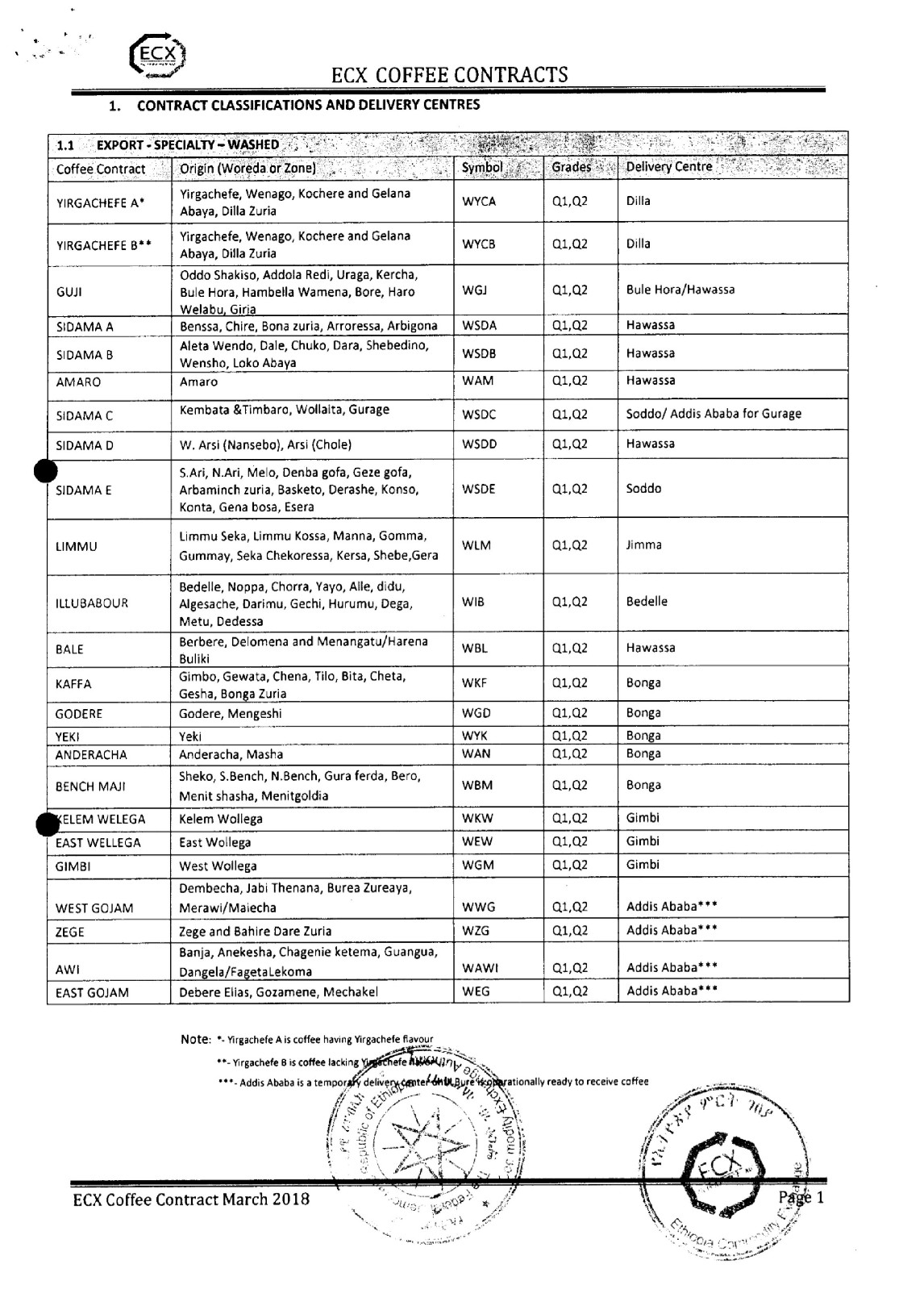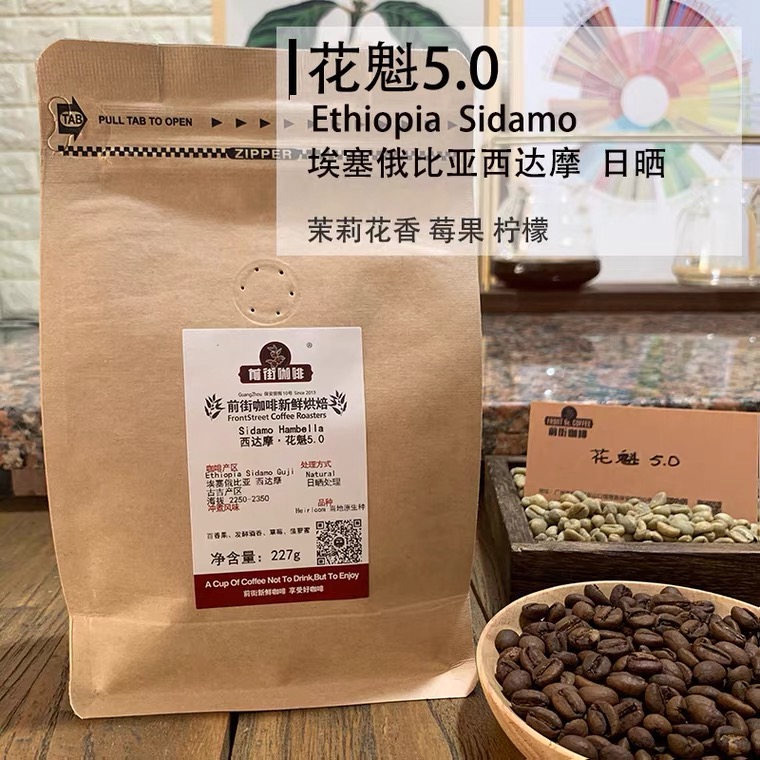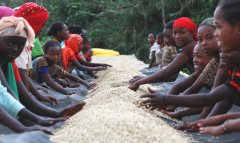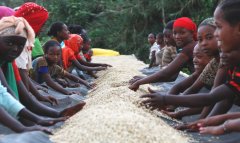The influence of Ethiopian Commodity Exchange on Coffee Market characteristics of flavor and taste of Huakui coffee beans
Coffee crops are the main source of foreign exchange in Ethiopia. It is the main export commodity to earn valuable foreign exchange for the country. However, coffee also has a vibrant domestic market.
The price of coffee varies greatly from season to season. These changes are a combination of factors reflecting domestic supply and cyclical trends in global coffee demand and supply. In addition, you can see the differences between different varieties and grades of coffee. Some varieties, such as Yejassefi and Sidamo, enjoy a high premium in the international market.
Coffee production is so large, how can we manage and understand the market well? As a country that enjoys coffee reputation and international status for a long time, Ethiopian coffee industry is supported by ECX (Ethiopia Commodity Exchange). ECX was established by the Ethiopian government in 2008 to democratize market trading rights for farmers to grow commodities such as beans, corn, coffee and wheat.
Crops produced in Ethiopia after 2008, including wheat, corn, sesame and coffee, were fully imported into the ECX trading system (Ethiopian Commodity Exchange) to replace the existing auction and export methods, by coffee farmers or cooperatives to send coffee to ECX centralized warehouses, beans of the same grade and producing areas will be mixed together and auctioned directly. You will not know which farmers or which cooperatives or producing areas produce it. In fact, this practice has no effect on output and quality, and it is easier to tell the quality of coffee by price. What is affected is that intermediate traders cannot freely track their satisfactory profits [low price and high quality] so that consumers will know more clearly, because if they do not pass the ECX trading system, they will be taxed heavily. Now more than 90% are through this trading system, but for buyers of boutique coffee ECX trading system is not a good thing, so from 2010 Ethiopia launched the DST (Direct Specialty Trade) system, DST system is an irregular Ethiopian auction, only through the SCAA cup test standard of more than 80 points of boutique coffee specialty coffee can hang up their own farm or cooperative name with foreign raw bean traders trade.
Let's take a look at the ECX contract. In this table, we can know very clearly the bean species, origin, treatment, raw bean grade and other information of coffee. Transparent trading is convenient for you to understand the coffee trade.


Qianjie is here to introduce the Ethiopian Sakuran. Here we need to briefly popularize science for everyone.
Sidamo producing area (Sidama) is located in the south of Ethiopia
The coffee growing area is around the Great Rift Valley (Great Rift Valley) of East Africa, and the coffee flavor of Sidamo is very diverse.
Because of different soil composition, regional microclimate and countless native coffee varieties, the coffee produced in each urban area has obvious differences and characteristics.
The sun-tanned coffee beans produced by "BukuAbelP" from the Hambella producing area won the championship of the Ethiopian sunburn group in 2017, when the bean was named Sakuran. Hambella (Humbera) is located in the Ethiopian coffee producing region of GUJI Guji, and currently has nearly 20 processing plants in the Hambella producing area. Among all the estates and processing plants, they come from the Goro Mountain Spring treatment plant, 2280 meters above sea level, and the red fructose content is above 21.
The difference between Xiaogui and X.0
In all these estates and processing plants, strictly speaking, only the sun-dried coffee beans from the "BukuAbel" processing plant can be called "Sakuran coffee beans". This is why Sakui 2.0, Sakui 3.0 and Sakui 3.1 appeared in 2018 and 2019, respectively. It was named 4.0 in 2020 and 5.0 in 21. In short, the area expanded, and then used Sakuran's fame of that year is Sakui X.0.
The difference between Sakui coffee beans in 2017 and those in later seasons.
Since the original Sakuran is included in Sakuran 2.0, can Sakuran still find it in Flower title 3.0? in 1819, he processed beans from small producing areas in the store, and Qianjie Coffee, among the beans in the above two-year batches, found that the flavor was very close to that of the original Sakuran, and the rhyme was not as good as that of the original Sakuran in 2017, but what is surprising is that We can sometimes identify the same small seeds from these two batches of raw beans. There are one-some very small varieties of Sakui coffee beans in 2017, which is the main source of the aroma of Sakui. Therefore, Sakuran, which contains the old Sakuran varieties, is also called Xiao Grain Sakuran. Since the beginning of 20 years, the processing plant has dealt with Xiao Grain Sakuran independently and sold it at the same time as Sakuran X.0 in the same year.
Qianjie Huakui uses medium and shallow baking to show the overall flavor of lemon, jasmine and berries.
Important Notice :
前街咖啡 FrontStreet Coffee has moved to new addredd:
FrontStreet Coffee Address: 315,Donghua East Road,GuangZhou
Tel:020 38364473
- Prev

Cultural ceremony of coffee in Ethiopia and Ethiopia how to drink COE22 and TOH coffee beans and their flavor and taste description
In addition to its rich biological origin, coffee also plays an important role in the culture of this country. The coffee ceremony (Coffee Ceremony) is part of the life of the Ethiopian people and dates back to centuries. Every morning, the women in the family bake fresh coffee and spices on the wacheff. Freshly roasted coffee beans are finely ground, carefully roasted and put in
- Next

The six modes of growing coffee in Ethiopia introduce in detail the flavor of Arsi sun-dried coffee beans.
At present, about 25% of the Ethiopian population directly or indirectly depends on coffee production for a living. The majority of farmers use traditional planting methods. Artificial care of coffee trees, the use of organic fertilizers, do not use harmful pesticides and herbicides, etc. Therefore, most of the coffee produced by Ethiopia is organic coffee. The planting pattern in Ethiopia is complex, ranging from wild coffee in the original forest to a strong contrast to it.
Related
- Detailed explanation of Jadeite planting Land in Panamanian Jadeite Manor introduction to the grading system of Jadeite competitive bidding, Red bid, Green bid and Rose Summer
- Story of Coffee planting in Brenka region of Costa Rica Stonehenge Manor anaerobic heavy honey treatment of flavor mouth
- What's on the barrel of Blue Mountain Coffee beans?
- Can American coffee also pull flowers? How to use hot American style to pull out a good-looking pattern?
- Can you make a cold extract with coffee beans? What is the right proportion for cold-extracted coffee formula?
- Indonesian PWN Gold Mandrine Coffee Origin Features Flavor How to Chong? Mandolin coffee is American.
- A brief introduction to the flavor characteristics of Brazilian yellow bourbon coffee beans
- What is the effect of different water quality on the flavor of cold-extracted coffee? What kind of water is best for brewing coffee?
- Why do you think of Rose Summer whenever you mention Panamanian coffee?
- Introduction to the characteristics of authentic blue mountain coffee bean producing areas? What is the CIB Coffee Authority in Jamaica?

